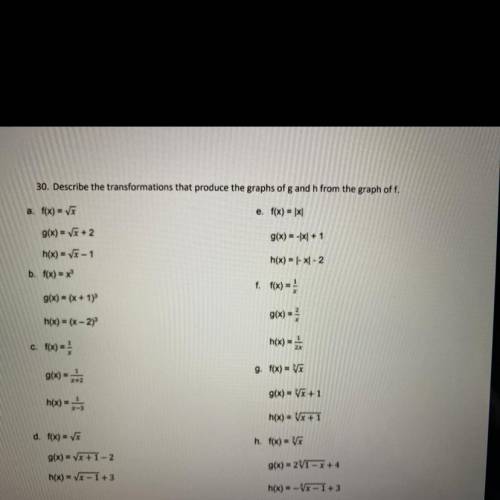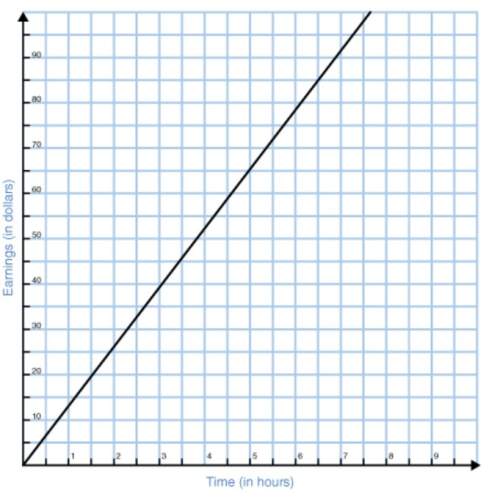
Mathematics, 23.02.2021 14:00 alonnachambon
30. Describe the transformations that produce the graphs of g and h from the graph of f.
a. f(x) = VX
e. f(x) = |x|
g(x) = 5x + 2
g(x) = -1x + 1
h(x) = VX-1
I
h(x) = |- xl - 2
b. f(x) = x
f. f(x) =
g(x) = (x + 1)
g(x) = }
h(x) = (x - 2)
c. f(x) =
h(x) = 2
g(x) = x+2
9. f(x) = VX
g(x) = Vx + 1
h(x) ==
h(x) = Vx+1


Answers: 1


Other questions on the subject: Mathematics


Mathematics, 21.06.2019 21:00, jennybee12331
Louis wants to carpet the rectangular floor of his basement the basement has an area of 864 square feet the width of the basement is 2/3 its length what is the length of lewis's basement
Answers: 2

Mathematics, 21.06.2019 21:40, joeykyle05
Write the contrapositive of the conditional statement. determine whether the contrapositive is true or false. if it is false, find a counterexample. a converse statement is formed by exchanging the hypothesis and conclusion of the conditional. a) a non-converse statement is not formed by exchanging the hypothesis and conclusion of the conditional. true b) a statement not formed by exchanging the hypothesis and conclusion of the conditional is a converse statement. false; an inverse statement is not formed by exchanging the hypothesis and conclusion of the conditional. c) a non-converse statement is formed by exchanging the hypothesis and conclusion of the conditional. false; an inverse statement is formed by negating both the hypothesis and conclusion of the conditional. d) a statement not formed by exchanging the hypothesis and conclusion of the conditional is not a converse statement. true
Answers: 1

Mathematics, 21.06.2019 21:50, shay68596
What is the next step in the given proof? choose the most logical approach. a. statement: m 1 + m 2 + 2(m 3) = 180° reason: angle addition b. statement: m 1 + m 3 = m 2 + m 3 reason: transitive property of equality c. statement: m 1 = m 2 reason: subtraction property of equality d. statement: m 1 + m 2 = m 2 + m 3 reason: substitution property of equality e. statement: 2(m 1) = m 2 + m 3 reason: substitution property of equality
Answers: 3
You know the right answer?
30. Describe the transformations that produce the graphs of g and h from the graph of f.
a. f(x) =...
Questions in other subjects:

Mathematics, 23.08.2019 12:10



Mathematics, 23.08.2019 12:10


German, 23.08.2019 12:10



History, 23.08.2019 12:10




